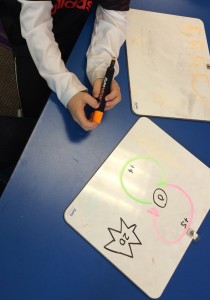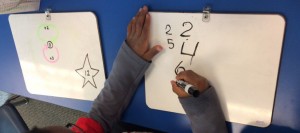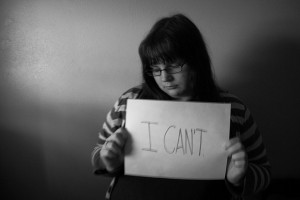“Student Voice” is a term that gets bandied about by well-meaning educators… and when true student voice is honored, it can make a world of difference for kids!
But what does it mean when the voice coming out of kids sounds more like the voice of the system that tells them what and how to think? Is it really the voice of the student, or is it just the same old, tired lines those kids have been fed since they started school?
Let’s take a step back for a minute. I have long been an advocate of finding ways to honor student voice. I’ve facilitated student voice sessions at conferences and EdCamps. I truly believe we don’t GIVE kids their voice. We get out of the way and then help to amplify that voice. For some students, they might need extra encouragement to share their voice in a way that is comfortable for them. Not every kid wants to stand up in front of their peers, adults – any live audience – and speak their truth, expose their vulnerabilities, and open themselves up to criticism. For educators, we need to help our children find that zone that initially provides some safety for them to open up and share their stories. For some kids, they are comfortable in a public arena and just want a chance at the metaphoric microphone to say their piece. Again, educators need to provide that space, and then get out of the way.
But what happens when that student’s voice sounds like something that has been produced by a system that, by its very nature, wants to deny authenticity of experience? That robs students of choice? That this system is “THE ONLY WAY?” That tells kids, “THIS is what learning looks like; and in order to be successful, you need to do x, y, z, in that order, and then you can be successful.”
I stepped into an ongoing conversation this morning on Twitter about non-traditional schooling. Some background on my thoughts of non-traditional schooling:
After 7 years at Anastasis Academy and tours of other non-traditional models, I feel that non-traditional schooling is an area where I have some insight. At Anastasis, we don’t do traditional. Our students (ages 5-14ish) are in multi-age classes. We don’t do homework. We don’t do testing. We don’t do isolated content areas. We don’t do grades! We DO encourage independent thinking. We DO learn through inquiry, a lot of hands-on activities, getting outside the classroom and into learning experiences where we can see firsthand what we’re studying. We DO experience service learning. We DO ask our kids to learn about themselves, each other, and the world- often in ways that challenge what they think they already know and believe. We want our students’ educational experiences to be more than just a boxed curriculum. We want them to learn how to manage their own freedoms, and we want them to think for themselves.
Back to the Twitter conversation… One educator* noted that he hears students specifically ask for traditional schooling, because they feel it better prepares them for high school, testing, and for college. I said that we owe it to kids to challenge that notion, and he replied that we should honor their “student voice.”
A lot of our students at Anastasis have come to us from more traditional schools, and sometimes, they ask us, “What do you want me to write? What do you want me to say?” They just want us to tell them what to do. They sometimes become frustrated with the process of learning. They ask for and welcome worksheets and tests…
Why? Because this is what they have been conditioned to do since they first stepped foot into a school.** Even though they sought something different… traditional schooling wasn’t working for them… they still often yearn for the familiar.
Worksheets and tests are familiar. Sometimes, worksheets and tests are easier, because they don’t often require you to think beyond a simple answer.
Maybe you know people who learned how to play the game of school very well. Those same people can tell you that they didn’t really learn much… they just memorized what they knew the teacher wanted them to answer. After the test, that information was conveniently forgotten so that they could move on to the next part of the game. For some people, they still play the game – in their jobs or whatever vocation they have chosen. Some people will argue that learning to play the game is what it’s all about. I disagree wholeheartedly.
In non-traditional models that require kids to think for themselves, kids can safely struggle, but they don’t always recognize what this type of struggle is. They can become frustrated more often. Sometimes, they just want someone to give them “the” answer.
Of course they do!
I’m not saying kids are lazy… not at all! But when faced with a choice of just doing what your teacher wants you to do versus thinking for yourself – sometimes, it’s easier just to play the game. This is especially true when you look back at what the system of schooling was intended to do!
Traditional schooling encourages compliance, assimilation, deference to authority, and very little time for true questioning. A “Do what I tell you to do” environment. This isn’t learning. This is TRAINING. We have trained kids to believe that learning is limited to one right answer, one “true” perspective and point-of-view (aka whatever POV is in the textbook)… and that learning is finite at each level.
Luckily for some kids, there are many wonderful, amazing teachers in traditional models who can help counteract the effects of the system. They inspire kids to think differently. They help kids love learning for the sake of learning. They encourage kids to discover passions they might never have known to explore. They might even show kids how to play the game, but to recognize that the game is not the focus.
Not all kids are fortunate enough to have these amazing teachers every year throughout their education, though… and some kids never even get that experience at all. (So do we just hope for the best for each kid, or do we say enough is enough and reject the system?)
So-called experts tell kids that they need to start preparing for this in primary levels (read here: “college and career readiness beginning in Kindergarten”)… that each level in school is only there to prepare you for the next stage in your life… and that you must have good grades in school to get into a good college so that you can then have a good job. There’s no joy in learning for the sake of learning. There’s no point in thinking about the process, because the end goal is always about another level. There’s no time for reflecting upon what we have learned, how we learned, and most importantly, WHY. The system was never intended to create independent thinkers, because independent thinkers are unwelcome. We tell kids that their dreams and passions aren’t important, because all of this “stuff” in the curriculum matters more than that. That, if you do well at each level of schooling, you WILL be successful.
We have to stop lying to children. Because, for a huge number of children, the system is designed for them to fail.
Look at the kids that the current “traditional” system leaves behind in the dust. Kids who don’t learn in traditional ways – kids who have difficulty communicating in a way that pleases a teacher – kids who fail within a system that was never designed for them to succeed in the first place – kids whose lived experiences are different from the narratives in those narrowed POVs in textbooks. If the current system was truly the key to success, it would work for ALL kids. We know it does not. There’s another whole discussion here about the issue of traditional schooling, how racism and other-ism are defining characteristics of the system, and who is promoted as successful or not. It’s vital to how we perceive student voice as well.
Considering all of the above and why I initially began to write this post… Are we still going to say that we should “honor” student voice when the voice is asking for more of this traditional system? Is it “honoring” to validate a child who parrots something that was intended to keep them from questioning the status quo? Or are we going to be the educators who recognize that this type of “student voice” is corrupted by a system that has been dictating for too long what kids should do, say, write, and THINK?
I honor student voice by listening and amplifying. But when kids tell me they want more of the system they came from before… I dig a little more deeply. I ask why. We talk. We think through what they’re saying they want. Then I ask them what they REALLY want. If we can get to this point of a discussion, trust me… they don’t ask for more tests and worksheets. It’s not more traditional “sit and git” and “just tell me what you want me to do.” When they know I’m there to help them, guide them, and support them in their learning struggles, they find what they want… and they want to face the challenges they found frustrating and difficult.
When kids are allowed to share their TRUE VOICE, it won’t be that they want to be trained how to take a test… because they know that doesn’t prepare them for anything but taking a test!
So let’s not kid ourselves into thinking we’re honoring kids and their voices if those voices are just echoing what the system tells them is important. That’s not really student voice… and, deep down, I think we know that.
I’m not waiting for higher education or even secondary education to change. I’m going to keep fighting that “traditional” system, because I’ve seen what an identity-honoring education does for kids. I’m going to continue advocating for ALL kids to be able to learn in a place that focuses on the student, not the teacher. Not the curriculum. Not the “this is just the way we do things” mentality.
I will keep lifting up the teachers who, regardless of WHERE they teach, lovingly inspire their students to know themselves, think differently, and to use their voices to make change happen.
If you’re an educator, you should expect and encourage student voice that differs from your own. You should honor student voice, even when you disagree with what is being said. However, if you recognize something in that student voice that sounds like it’s nothing more than an echo, dig a little deeper. Ask more questions. Help the student to question the WHAT and especially the WHY of what they’re saying.
I think we do a disservice to kids if we don’t help them question a system that dictates to them what they should think.
UPDATE: Please also read this post by Aviva Dunsiger about the social construct of SCHOOL!
* I’m choosing not to name the educators in this conversation, because I’m not intending this as an attack on their perspectives, nor am I asking for people who agree with me to pile on in additional debate with them. Feel free to comment here on my post. My comments policy is noted in the sidebar.
**One of the most interesting things I’ve witnessed as a teacher at Anastasis is observing students who have never been to a traditional school. They started as “littles” at Anastasis. These kids flourish in learning experiences where they can dig in, ask a ton of questions, use their hands to create something, ask MORE questions, and then talk a LOT about the process. When they go on learning excursions, they are not your typical school children on a field trip; and usually, the adults who are leading the tour or experience are thrown for a loop. They don’t know how to react to 5-6 year olds who ask really in-depth questions. When these kids create projects that fail, they don’t worry about a bad grade, because they don’t know what grades are. They start looking at each step in their process, ask more questions, and then reflect on what they could do to improve. These kids ideate and iterate in ways you don’t typically see in more traditional models… because this is just what they do. They have never known any other way of learning in school. I don’t worry about them not being prepared for the next level of school. They know how to learn and advocate for themselves. I worry that the next level of school is not prepared for THESE KIDS!








